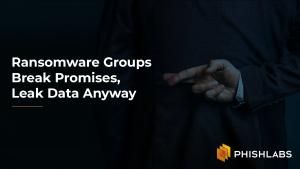Blog
Look-alike Domain Mitigation: Breaking Down the Steps
By Jessica Ryan on Mon, 12/21/2020
Look-alike domains remain some of the most consistent elements of cyber attacks targeting organizations. At a high-level, there are two ways to mitigate the threat of a look-alike domain: remove the threat completely by taking it offline, or block attacks on your users by implementing IT security controls. If we dissect the construction of a look-alike domain, we see where each step in its...


















